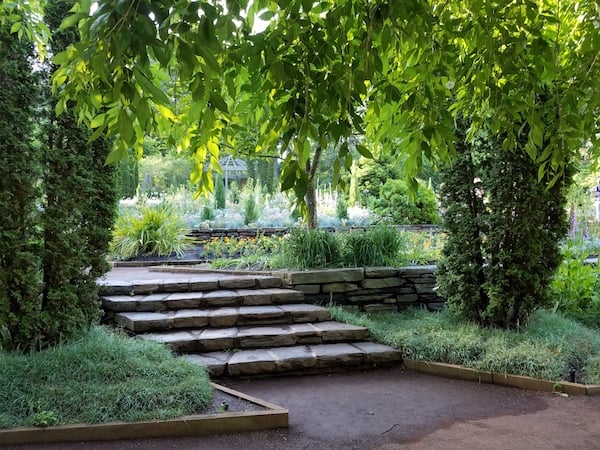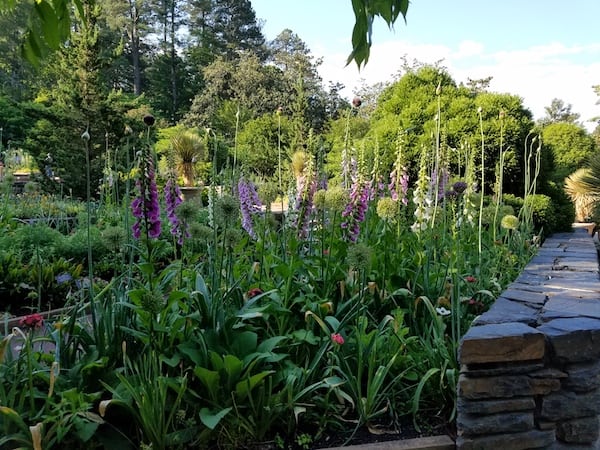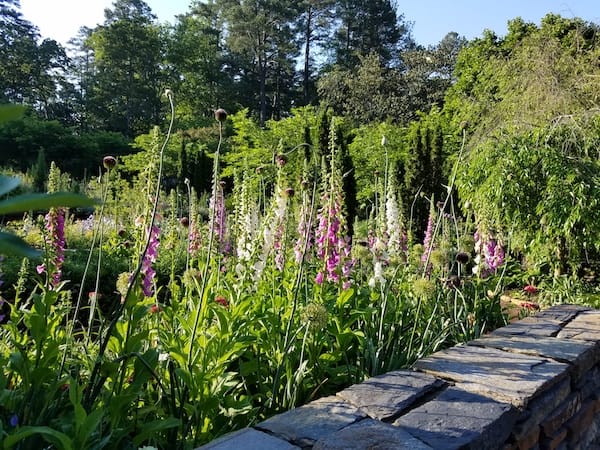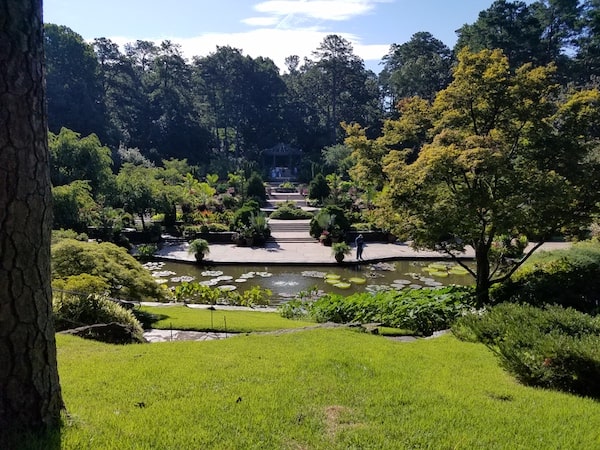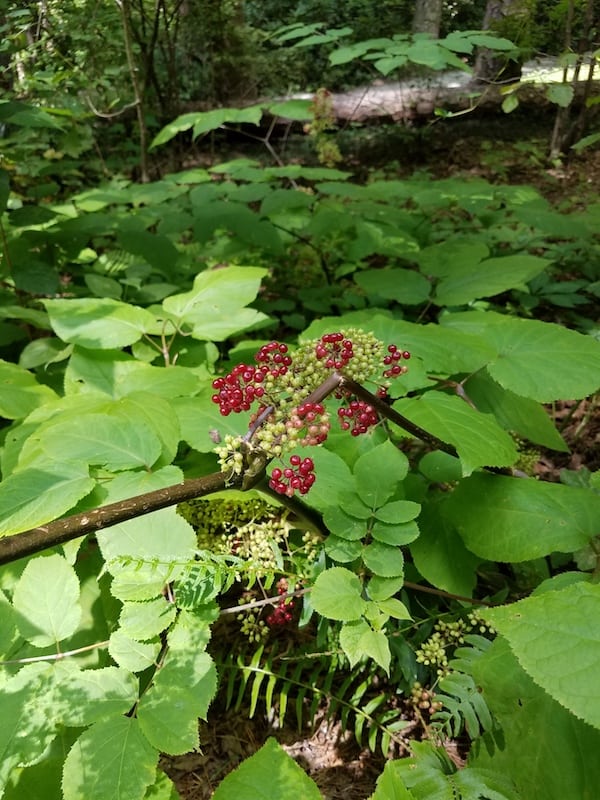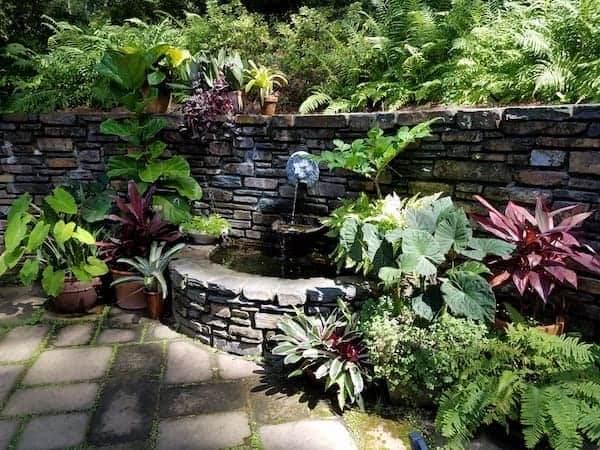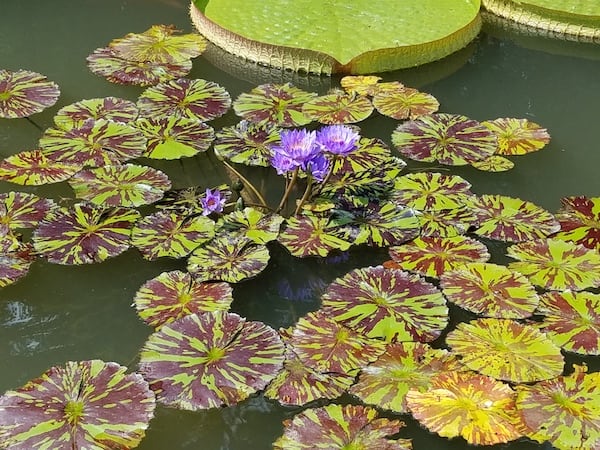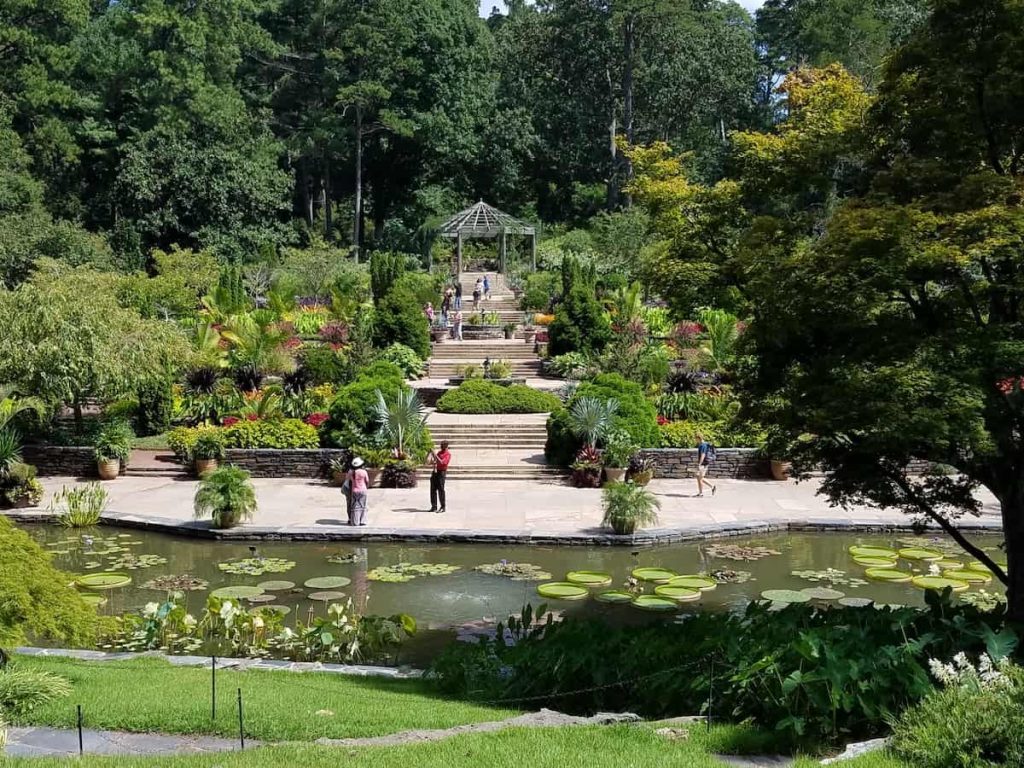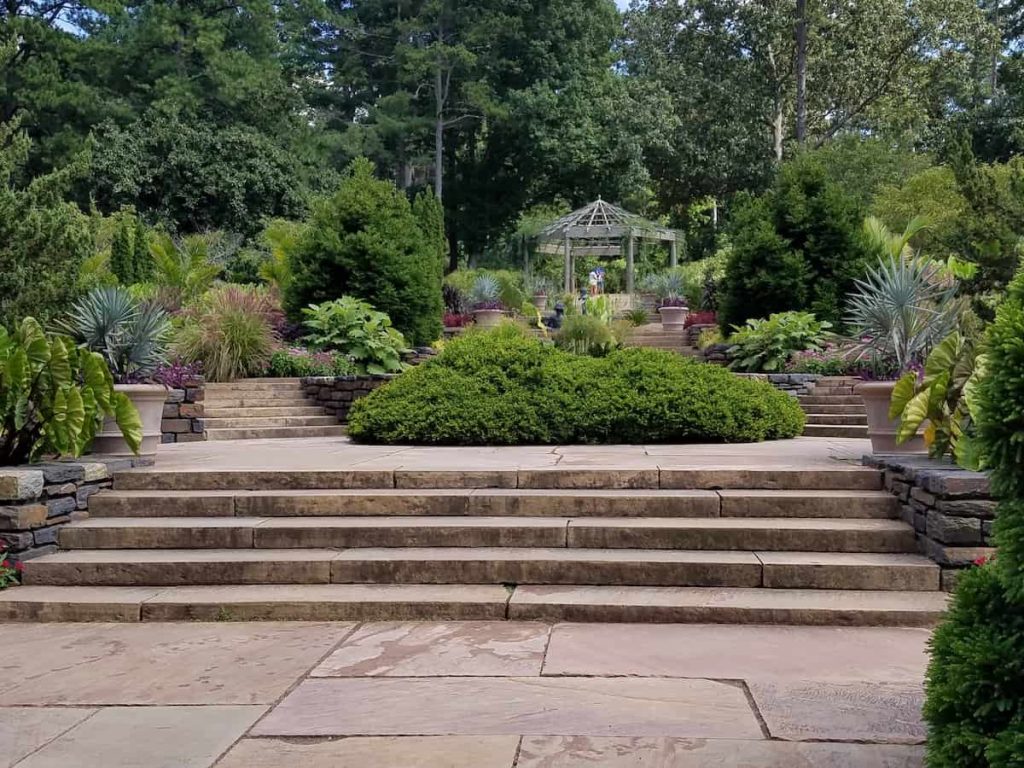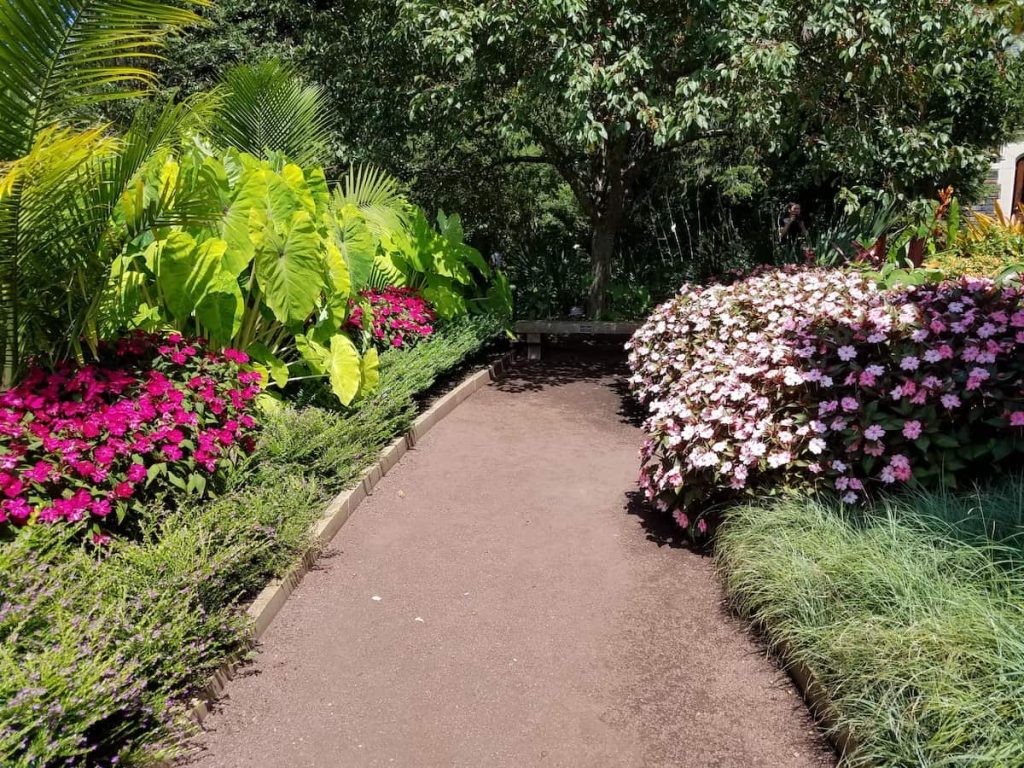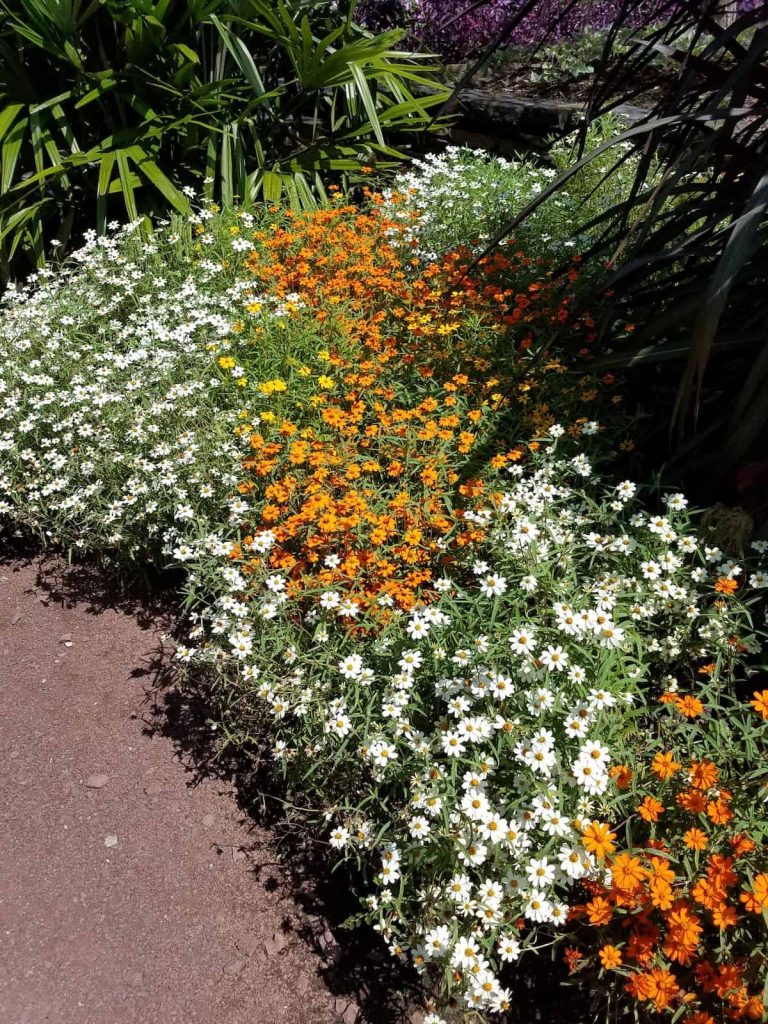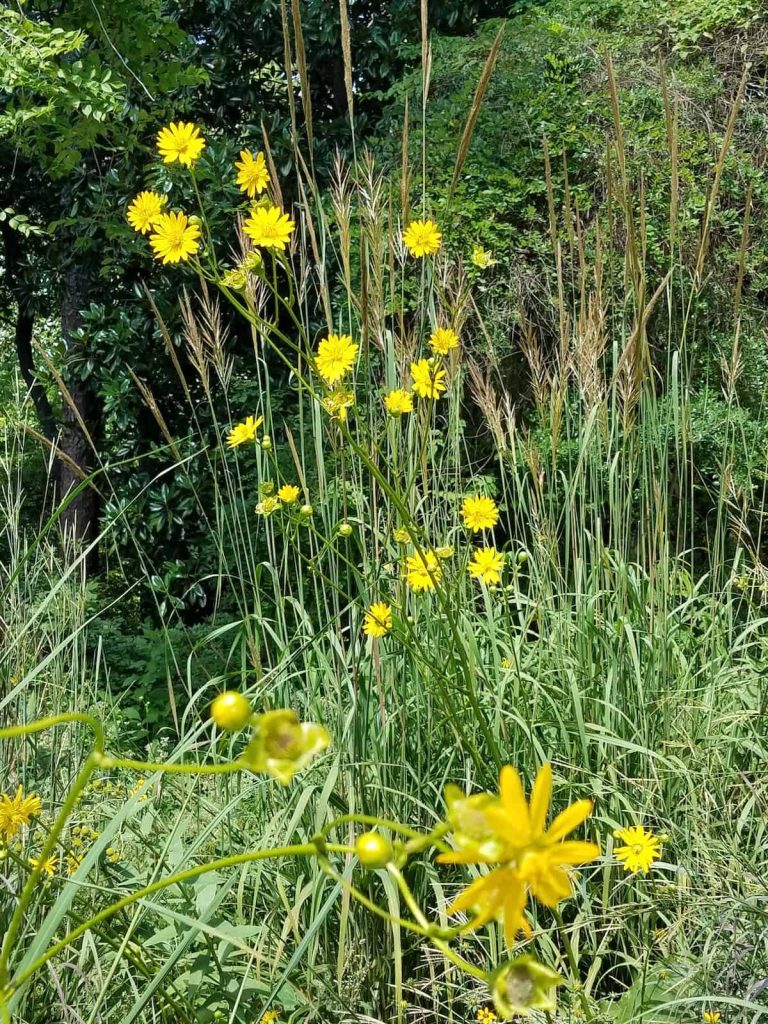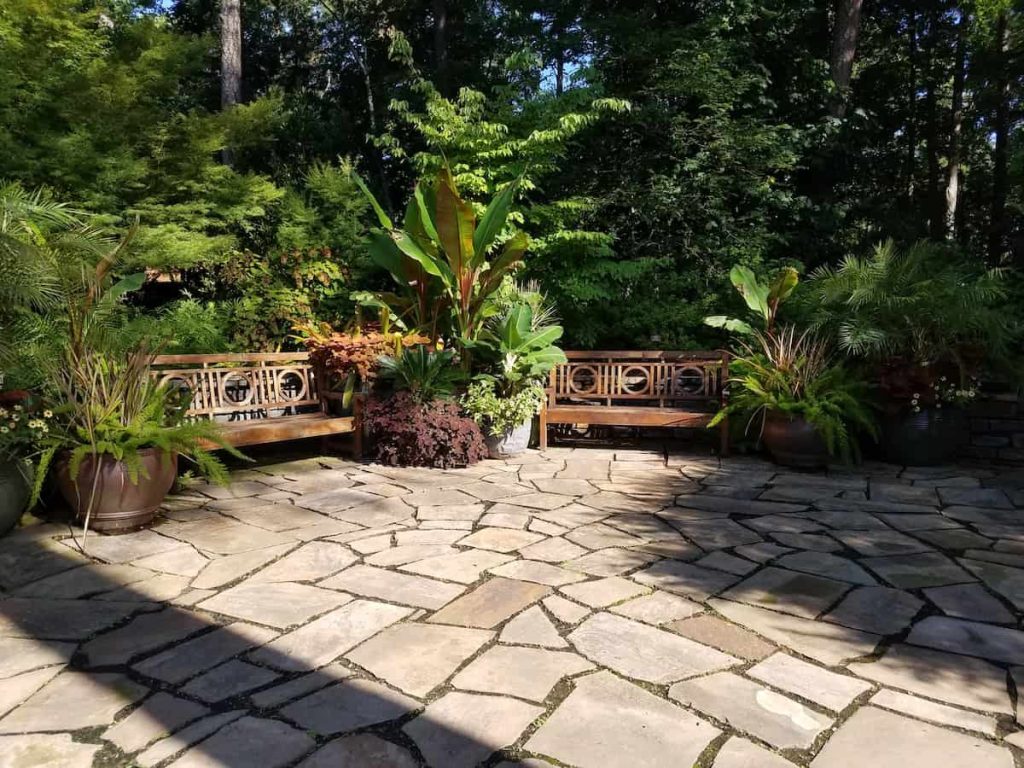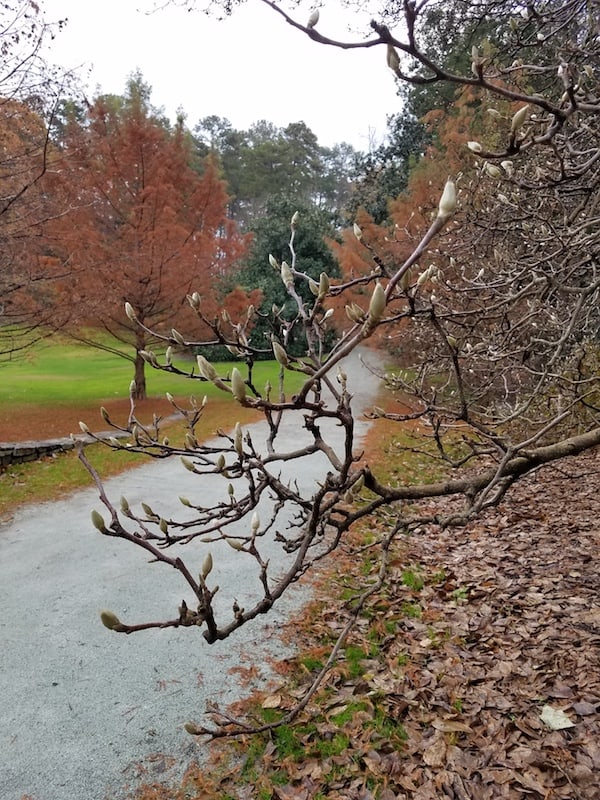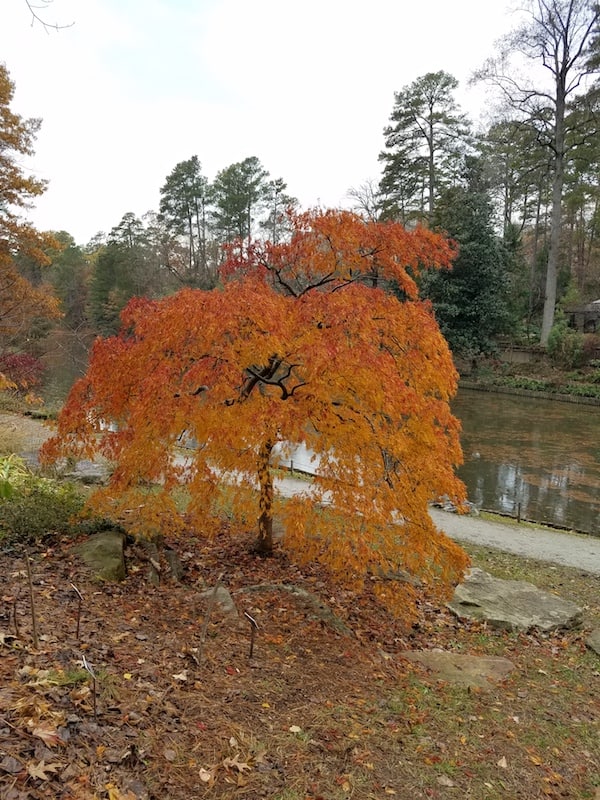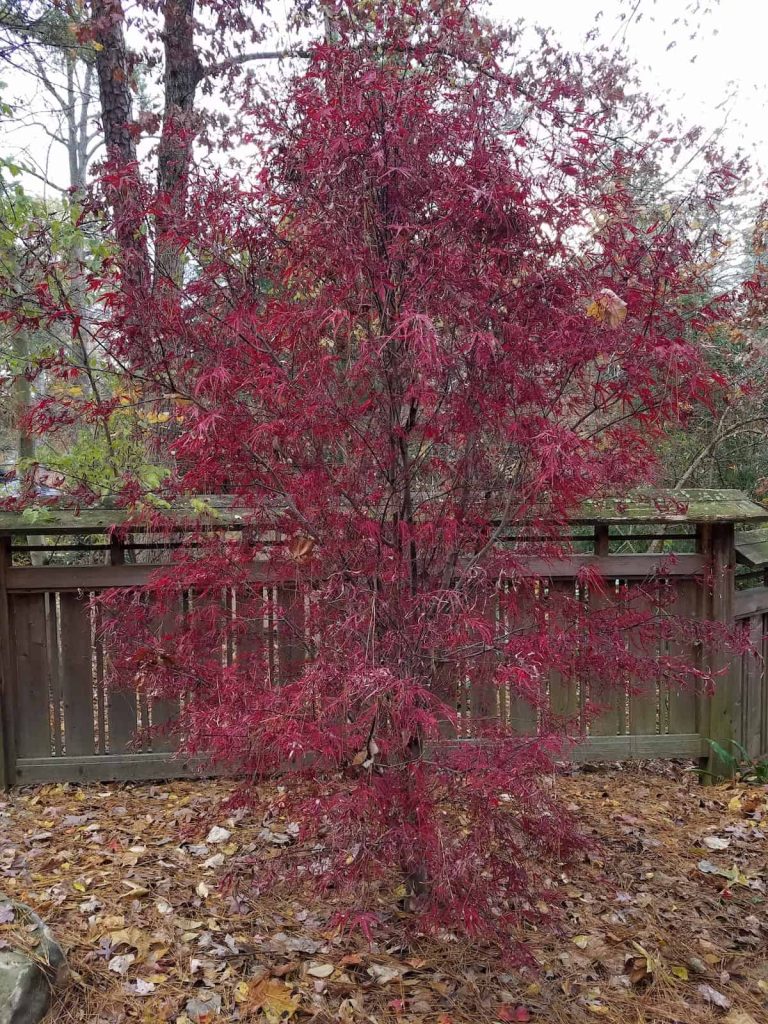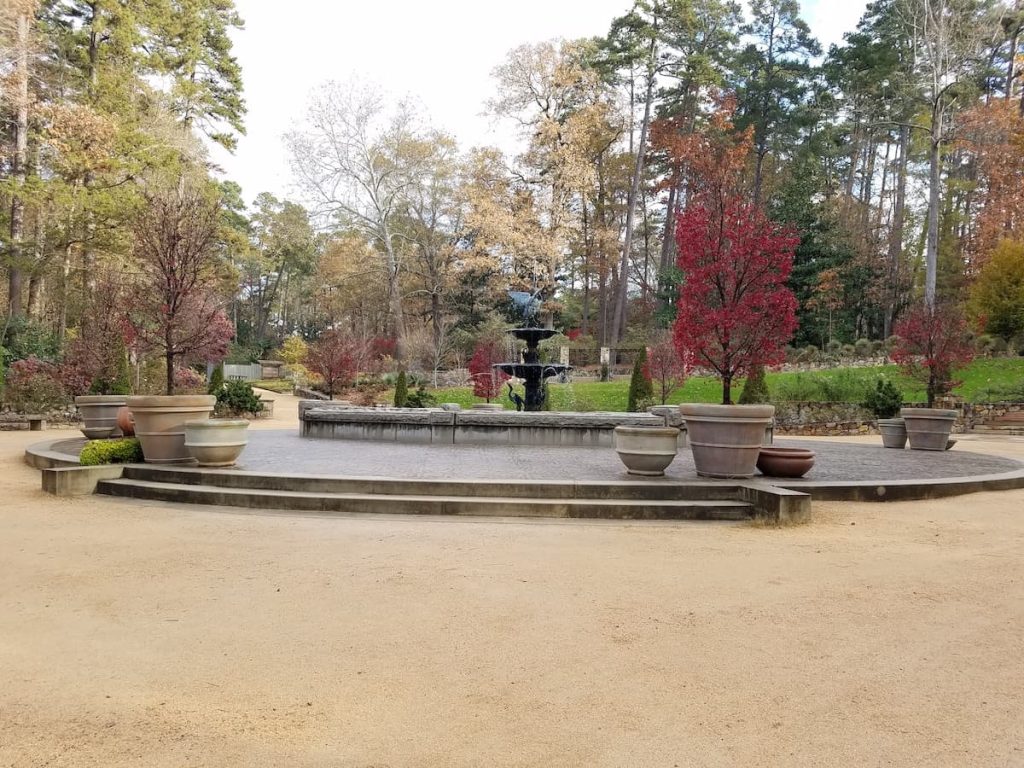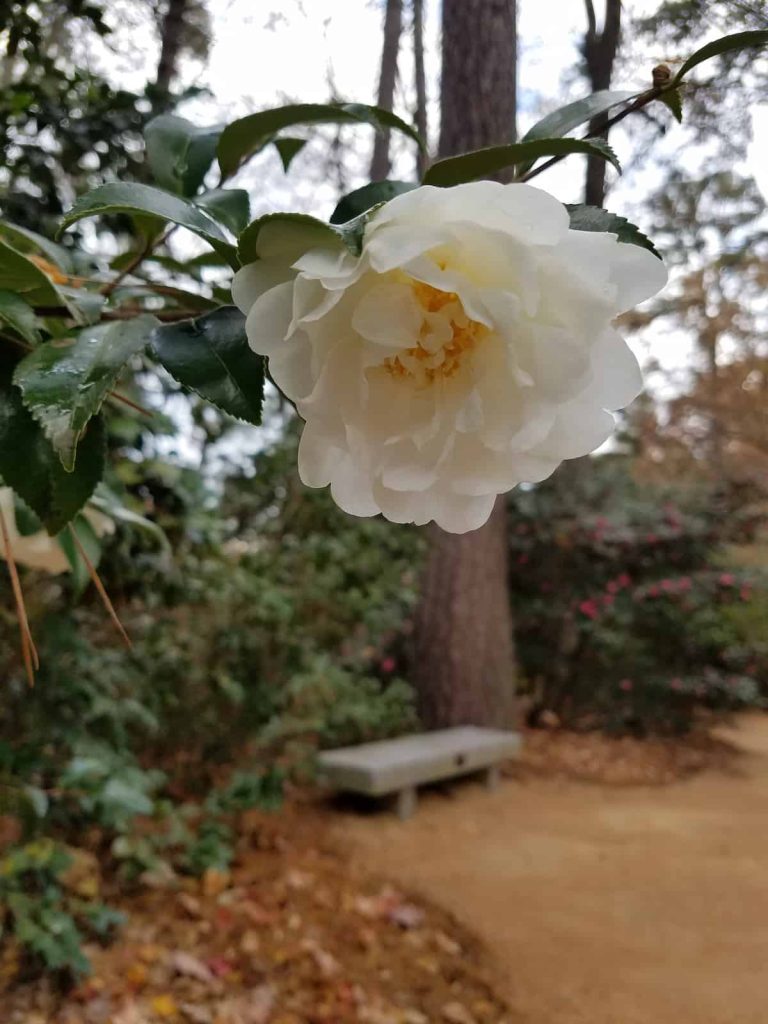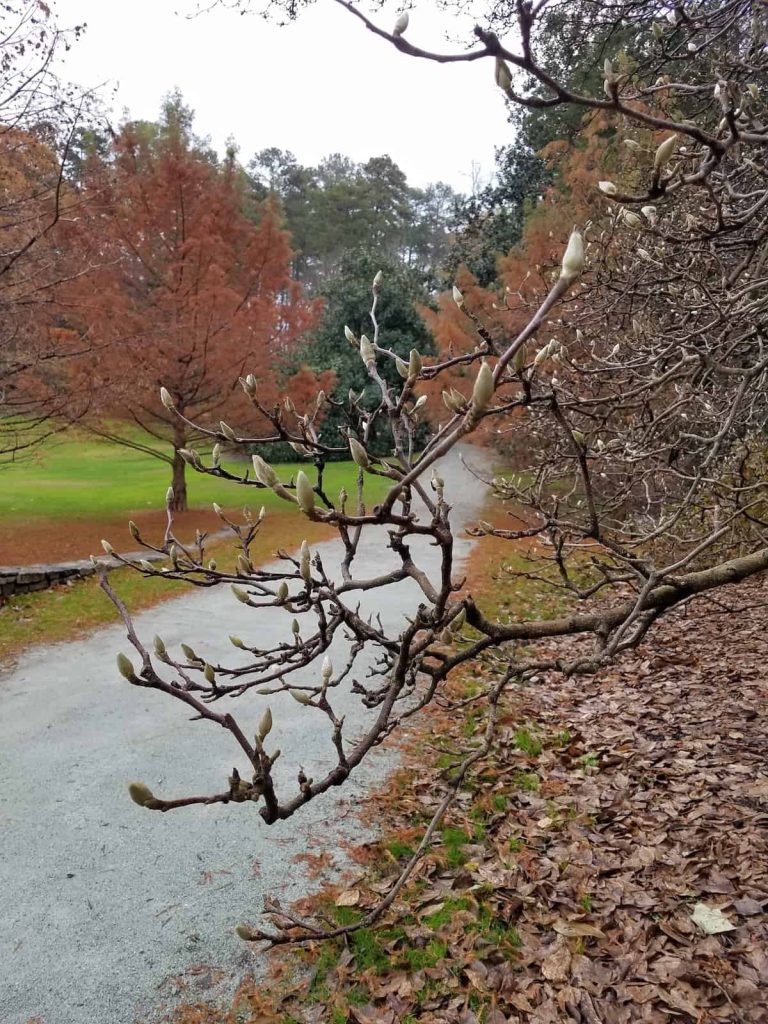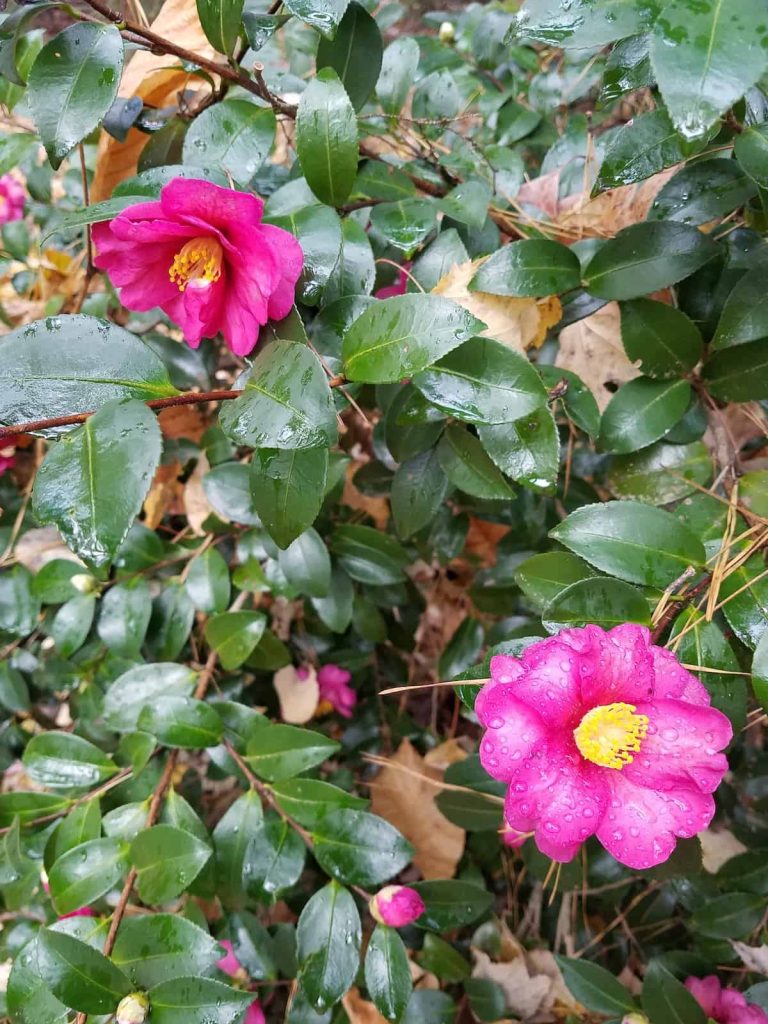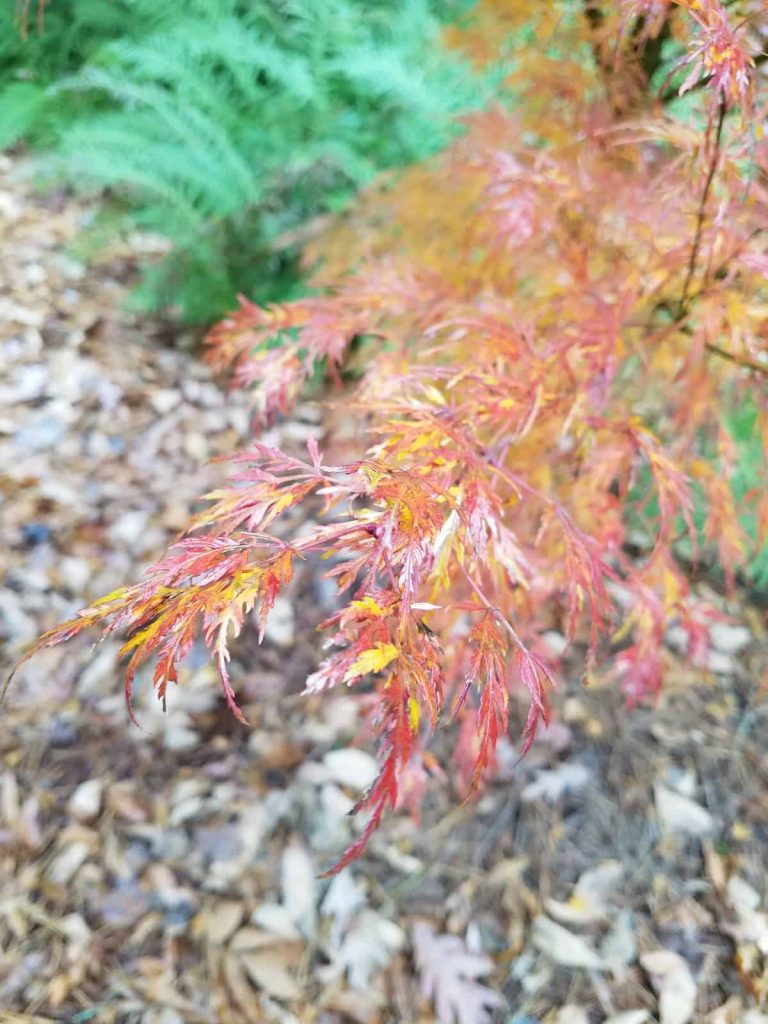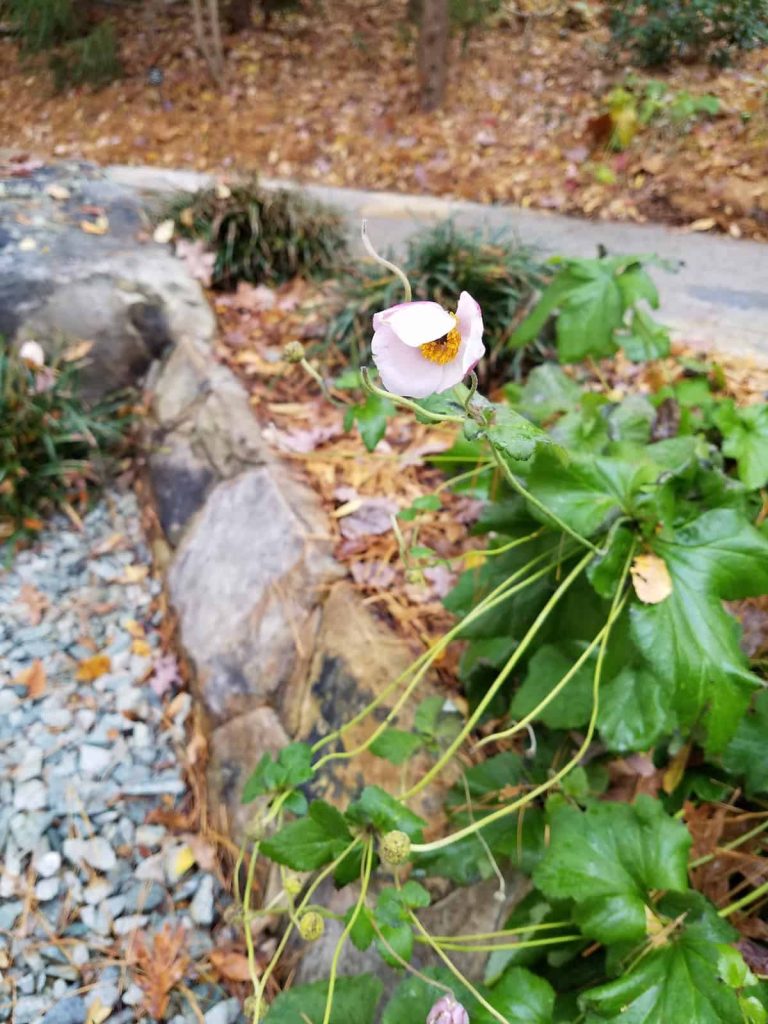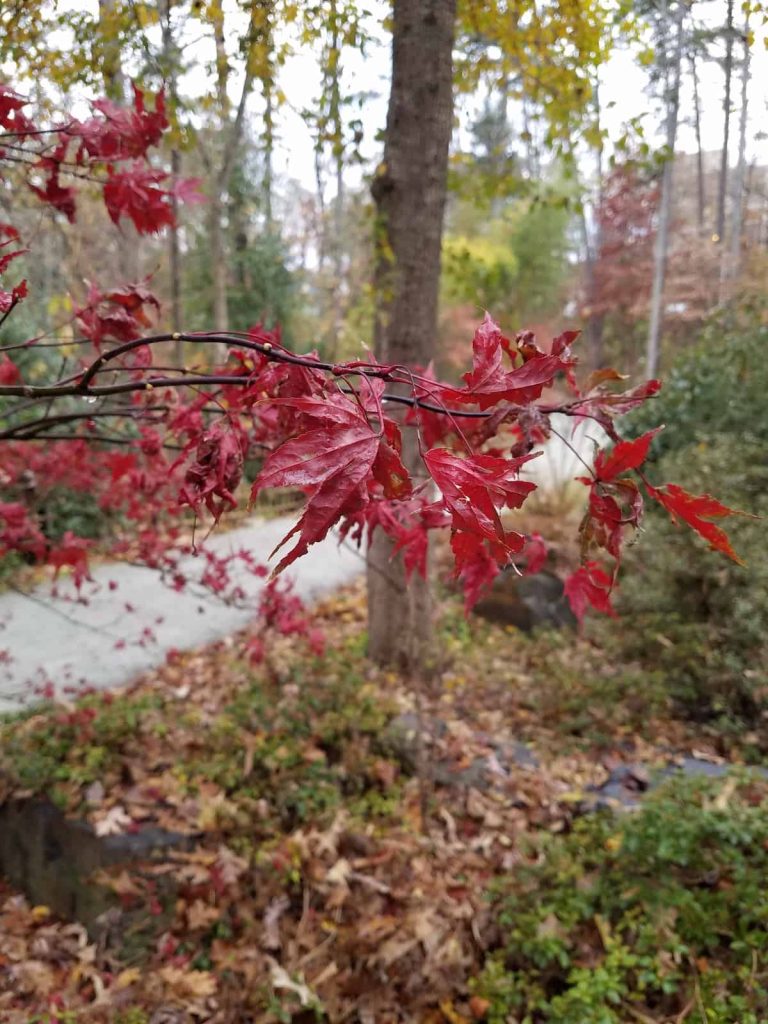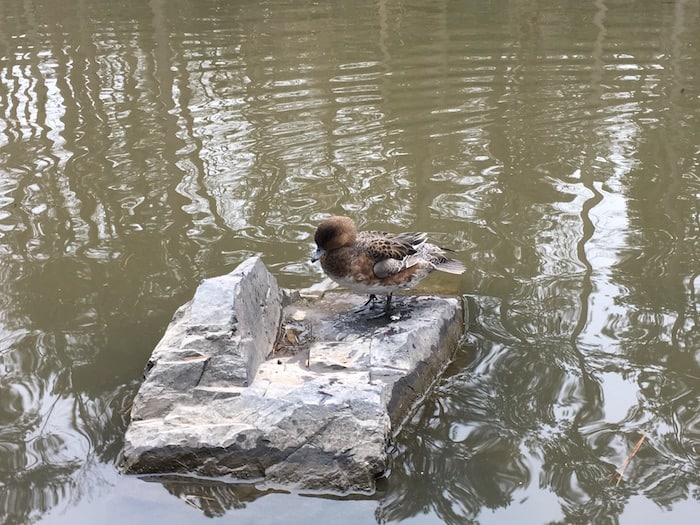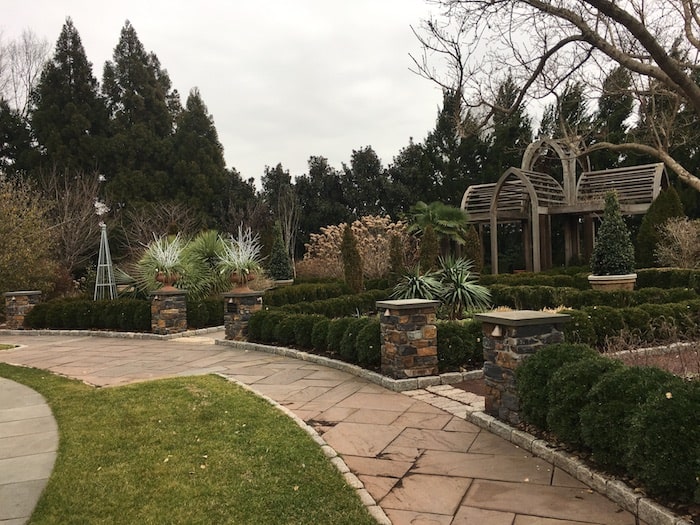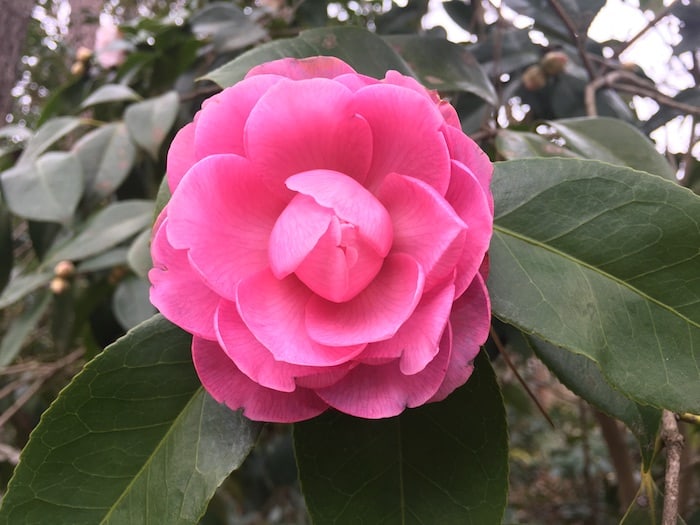Duke Gardens, at 420 Anderson Street in Durham, is considered one of the 10 top public gardens in the United States. It is part of Duke University, which supplies about 30% of its budget.
It’s open every day, 365 days a year, from 8 a.m. to dusk.
Duke Gardens is an excellent place to experience top-notch landscape design, and maybe to get some ideas for your own space (in a smaller scale.)
You might want to check out our write-up on 10 botanical gardens in the Triangle.
Parts of Duke Gardens
Doris Duke Center and Gardens
- Angle Amphitheater and Virtue Peace Pond
- Burpee Learning Center
- Charlotte Brody Discovery Garden
- Doris Duke Center / Terrace Gift Shop
- Page-Rollins White Garden/Gothic Pavilion
- Spring Woodland Garden
- Welch Woodland Garden Overlook and Stream
Historic Gardens
- Azalea Court
- Bartter Family Terrace House / Café
- Dawn Redwood
- Fisher Amptheater
- Frances P. Rollins Overlook
- Hanes Iris Garden
- Historic Terraces. Pergola and Fish Pool
- Iris Bridge
- Leubuscher Rock Garden
- Mary Duke Biddle Rose Garden / Roney Fountain
- Memorial Garden
- President’s Bridge
- Spengler Camellia Garden
- Sundial and Butterfly Garden
- Walker Dillard Kirby Perennial Allée
H.L. Blomquist Garden of Native Gardens
- Bird Viewing Shelter
- Blomquist Gatehouse
- Blomquist Pavilion
- Carnivorous Plant Bog
- Edwin F. Steffek Jr. Bridge and Fern Grotto
- McNabb Family Bridge and Stream
- Piedmont Prairie and Classroom
- Steve Church Endangered Species Garden
- Wildlife Garden
W.L. Culberson Asiatic Arboretum
- Durham-Toyama Sister Cities Japanese Pavilion/Teahouse
- Garden for Peace
- Kathleen Smith Moss Garden
- Meyer Bridge
- Peonies
- Pine Clouds Mountain Stream
- Ruth Mary Meyer Japanese Garden
- Waterfowl Observation Area
- Ziz-Zag Bridge
Visiting Duke Gardens
Admission to Duke Gardens is free, but there’s a charge for parking.
Please come on a weekday if you can, because parking is more likely to fill up on the weekends. Please still maintain social distancing, and wear masks when in a crowded area or a restroom. Read more about this phase of re-opening.
There is no wrong season to visit Duke Gardens. There are plants in bloom in every season, and endless number of paths to explore, and benches along the way to rest and enjoy the sights and sounds of nature. Read on for a gallery of photos of Duke Gardens during each season, along with a list of some of the highlights for each time of year!
Spring at Duke Gardens
Springtime is an exciting time to visit Duke Gardens. Tulips, cherry trees, Virginia bluebells, Japonese camellias, and daffodils are in bloom, among many more plants throughout the gardens.
Summer at Duke Gardens
Summer is a luxurious time for Duke Gardens. Just a few of the highlights are many varieties of lilies, azaleas, coneflowers, hydrangeas, phlox, sunflowers, and crape myrtles.
Fall at Duke Gardens
You don’t have to drive far to see spectacular fall foliage. (Although if you do want to, we’ve put together a list of some of the best fall color all over North Carolina.) Duke Gardens truly puts on a show. You’ll even find some flowers blooming, but they tend to be shy. You can find Black-eyed Susan, goldenrod, Schweinitz’s sunflower, camellia, and wood aster blooming this time of year.
Winter at Duke Gardens
Even the winter is a great time to visit. You won’t encounter crowds, and you’ll be notice the plants and landscaping that can get obscured by the wealth of flowers in spring and summer. Blooming this time of year are Lenten rose, Winterberry holly, Winter jasmine, magnolia, witch hazel and Giant snowdrop.
